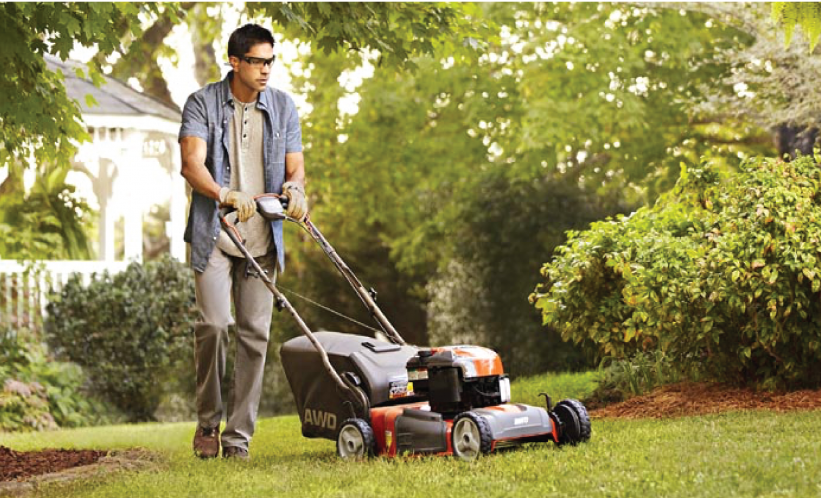Lawn Care
Proper lawn care techniques and timing can help create a better, drought-resistant lawn in an easier and more environmentally friendly way.
In the spring, it is best to mow your lawn to the height of 2.5-3 inches. Low mowing allows the sun to warm the soil which helps grass grow faster. Be sure to gradually lower the height of your grass, never cutting off more than a third of its height. Spring is a time for herbicides, not fertilizers. Fertilizing at this time promotes warm season weeds, decreases root production, and promotes diseases.
In the summer, it’s best to let your grass grow higher to 3-4 inches. This creates competition with weeds and prevents crabgrass germination. Frequent rainfall is common for Kentucky summers which provides sufficient water for lawns (overwatering your lawn is not helpful). However, if there is a drought or you notice your lawn is dry (you can see footprints), water your grass in the morning until it begins puddling.
Fall is a good time to return to low mowing your lawn. This creates a denser lawn, reduces winter and spring diseases, and makes raking leaves easier. This is the best time for applying fertilizers. Fall fertilization provides better winter color, less frequent spring mowing, fewer summer weeds, less heat stress and summer watering, and less need for chemical inputs throughout the year. Test your soil to see what nutrients it needs. Never fertilize more than is necessary or before it rains.

Extra Tips for a Healthy Lawn
- Water more deeply (not more frequently) to encourage a deeper root system.
- On sloping land, irrigate more slowly to prevent runoff.
- Adjust sprinklers so they are not watering the road or driveway.
- Install a rain barrel to catch rainwater; use the water on your lawn and garden.
- Keep grass at a height of about 3 inches. This will allow for deeper root growth and healthier grass.
- Leave your grass clippings on the lawn; they act as natural fertilizer for your grass.
- Don’t leave grass clippings on driveways, sidewalks, or streets. They will just wash into the storm drain, directly polluting local streams (this means don’t dispose of clippings in streams either)!
- Use natural or compost fertilizer on your lawn.
- Incorporate native plant species into your lawn and garden. They require fewer inputs and provide the best food and habitat for local wildlife.
- Use Integrated Pest Management rather than relying only on chemical pesticides that can be harmful to the environment, children, and pets.
- Plant a rain garden to decrease runoff from stormwater.
- Have your soil tested to determine its nutrient needs. Make fertilizer type and application decisions based on the soil test. This is a step toward becoming a green neighbor! Visit this link to learn more about the green neighbor program.
- If you are interested in hiring help for your lawn, look into choosing a Green Check company to ensure environmentally friendly practices.
Lawn Alternatives
The idea that a perfect yard consists of spotless, bright green grass is only a social construct. While grassy lawns do have their benefits, there are alternatives that can be even better for the environment and just as pretty too! Groundcovers, ornamental grasses, evergreen moss, native perennial beds, and even artificial turf are among the alternatives. Groundcovers, moss, and artificial turf provide an open, walkable space just like grass. While incorporating some ornamental grasses and native perennials adds height and interest. Visit Gilmour for more information about the alternatives. If you don’t want to get rid of grass entirely, even shrinking the size of your lawn provides extra benefits. If the topic of how lawns have become a social construct interests you there is lots of information about it on the internet.